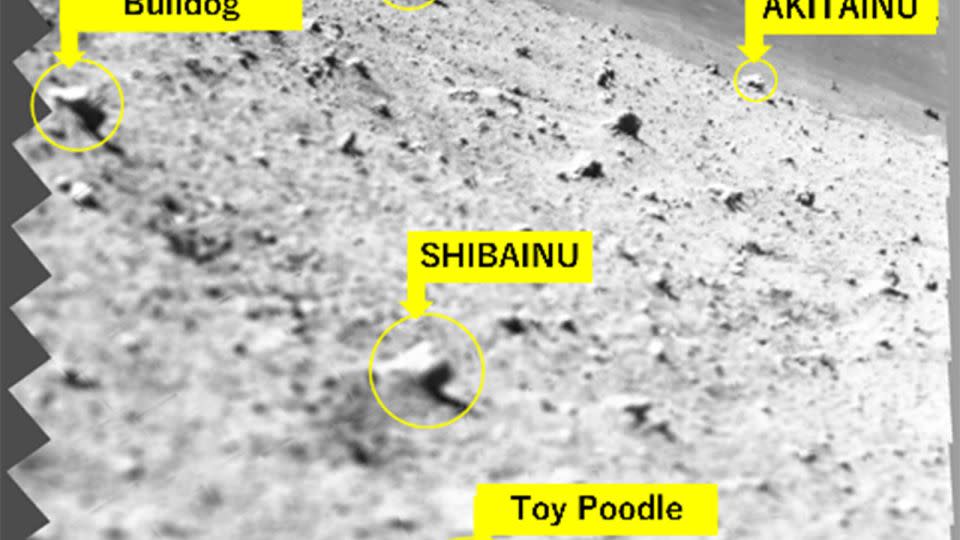Sign up for CNN’s Wonder Theory science newsletter. Explore the universe with news on fascinating discoveries, scientific advancements and more.
Japan’s space agency said Thursday that its “moon sniper” robotic explorer landed 55 meters (165 feet) from its target on the lunar surface last week, calling it a “significant achievement” despite problems during the landing that put the mission in jeopardy.
The Smart Lander for Investigating Moon, or SLIM, mission reached the moon’s surface just after 10:20 a.m. ET (12:20 a.m. Saturday Japan Standard Time) on January 19, according to data shared by the Japan Aerospace Exploration Agency.
During its descent, the spacecraft experienced “some kind of anomaly” at a distance of around 50 meters (165 feet) above the surface, JAXA officials said in a news conference. One of the main engines was lost as a result, forcing the spacecraft to land on its nose with its “main engine facing upward and in an almost vertical position.”
As a result, the spacecraft’s solar panels are facing west rather than upward as intended, forcing it to operate on limited battery power.
The agency said Thursday it was able to communicate with SLIM after landing and released the first images transmitted by SLIM from the moon’s surface.



The lander’s battery has since been turned off to maintain spacecraft functionality, JAXA officials said. If the Moon Sniper can survive the frigid temperatures of lunar night, the space agency hopes light might reach the solar cells as the sun’s angle on the moon changes, potentially restoring power generation and allowing operations to resume.
Despite these challenges, the agency hailed the moment as “a significant achievement for future lunar and planetary exploration.” The SLIM explorer used new precision technology to demonstrate a “pinpoint” landing and successfully reached its goals of landing within 100 meters of its target.


The touchdown made Japan the third country this century — and the fifth ever — to land on the moon.
JAXA said it is investigating the reasons for the anomaly during the landing, but that it hopes the technology developed in SLIM can be applied to future space missions.
Ashley Strickland contributed to this report .
For more CNN news and newsletters create an account at CNN.com

Dr. Sarah Adams is a scientist and science communicator who makes complex topics accessible to all. Her articles explore breakthroughs in various scientific disciplines, from space exploration to cutting-edge research.







